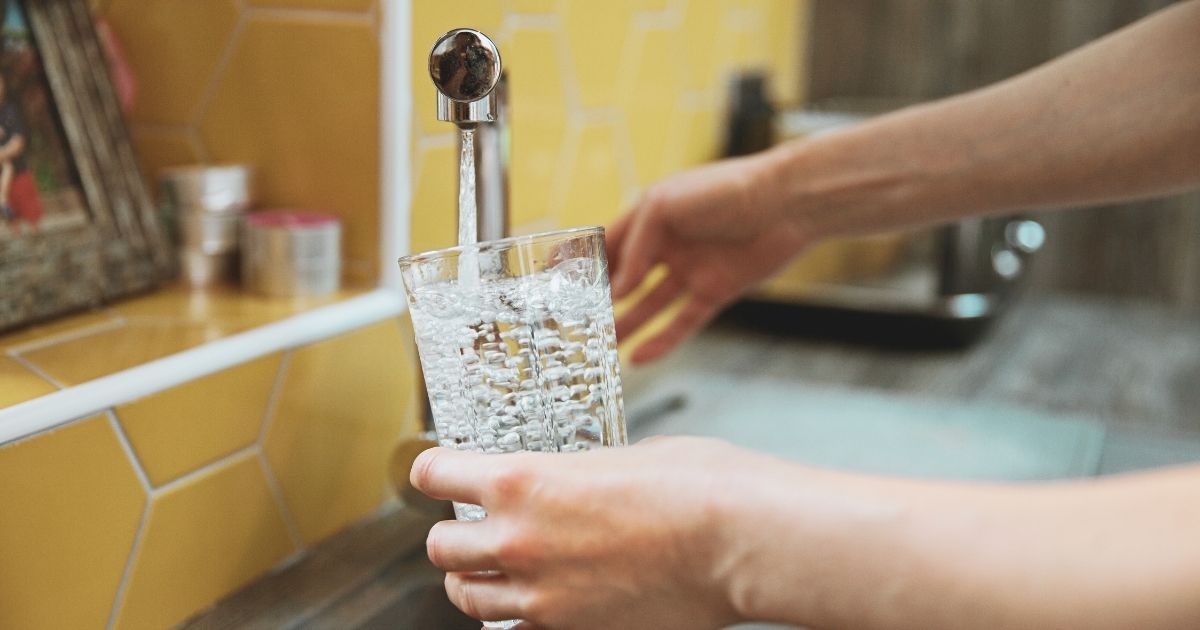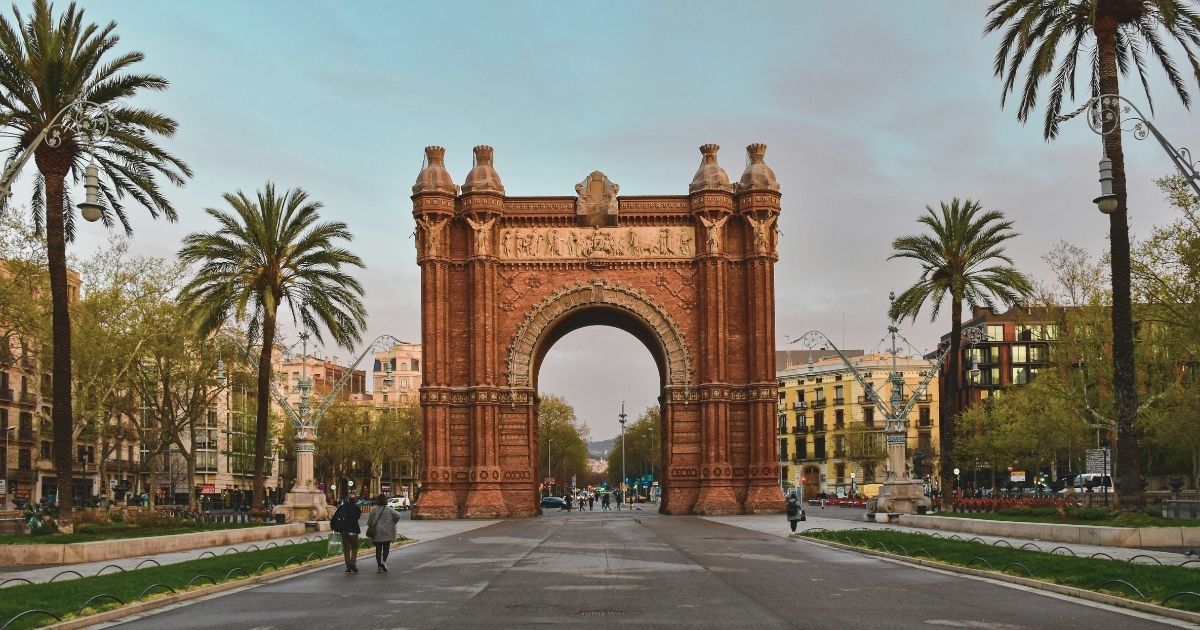Barcelona’s vibrant food scene blends traditional Catalan cuisine with innovative gastronomy that keeps digital nomads coming back for more. Knowing where to eat in Barcelona transforms your experience from tourist-trap mediocrity to authentic culinary delight. The city offers everything from centuries-old tapas bars to cutting-edge fusion restaurants, all sharing a passion for fresh, quality ingredients.
This guide will help you navigate Barcelona’s diverse food scene like a local, taking you beyond tourist hotspots to discover neighborhood gems, bustling markets, and atmospheric eateries where you’ll find the true taste of Barcelona.
Understanding Barcelona’s culinary scene
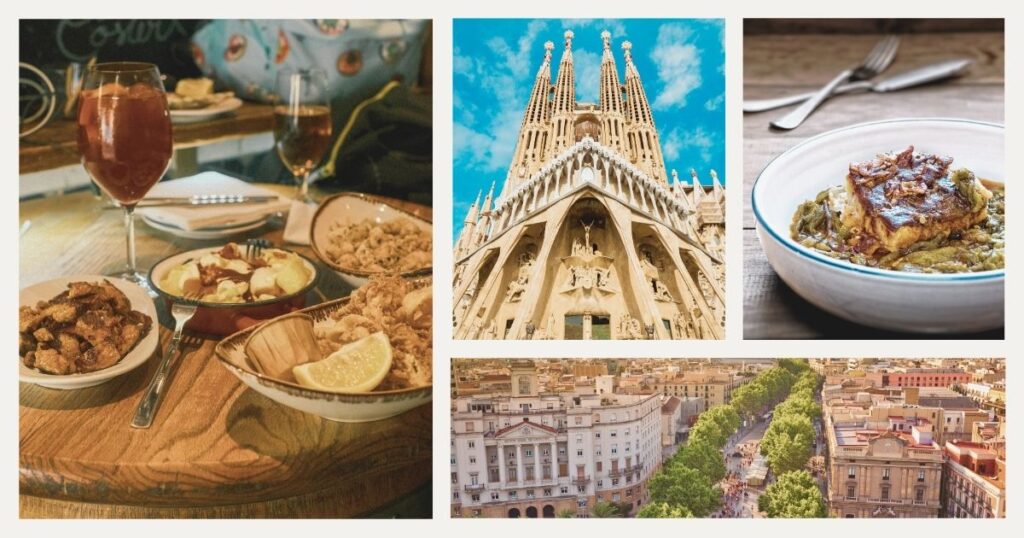
Before diving into specific recommendations on where to eat in Barcelona, it’s helpful to understand the city’s unique food culture. Barcelona’s cuisine reflects its history as a Mediterranean port city with strong Catalan traditions, while embracing influences from across Spain and beyond.
Meal times and food culture
Barcelona follows the traditional Spanish eating schedule. Locals typically enjoy a light breakfast, a substantial lunch between 2-4 PM, and dinner starting at 9 PM or later. This schedule influences where to eat in Barcelona, as many authentic establishments strictly adhere to these hours.
🌟 Pro tip: many restaurants offer a “menú del día” (daily menu) at lunchtime, providing excellent value with a three-course meal plus drink for a fixed price – often the best way to experience quality local cuisine affordably.
Barcelona’s food markets
Food markets are at the heart of Barcelona’s culinary identity. These vibrant hubs aren’t just somewhere to eat in Barcelona but also where locals shop and socialize.
La Boqueria on Las Ramblas might be the most famous, but it’s increasingly tourist-oriented. For a more authentic experience, explore markets like Sant Antoni, Santa Caterina, or La Llibertat where you’ll find fresh produce, local specialties, and affordable eateries serving market-fresh cuisine.
💡 Did you know? Barcelona has 39 food markets spread throughout the city’s neighborhoods, making them cultural institutions dating back centuries.
Local neighborhood eateries for digital nomads
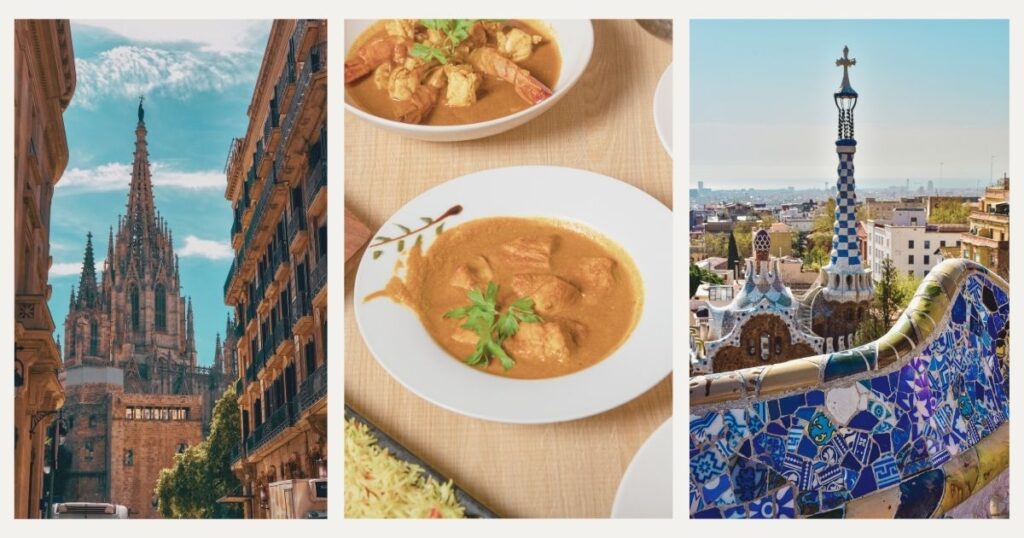
Beyond the bustling city center lies a world of neighborhood restaurants where Barcelona’s residents go when deciding where to eat in Barcelona. These local haunts offer authentic cuisine, relaxed atmospheres, and often better value than tourist-zone establishments.
Gràcia’s culinary treasures
The bohemian neighborhood of Gràcia offers charming places to eat in Barcelona with its village-like atmosphere and abundance of local-favorite restaurants.
Cal Boter serves traditional Catalan cuisine in an old-world setting, while La Pepita offers creative tapas in a lively atmosphere. For plant-based options, Rasoterra provides sophisticated vegetarian cuisine that even non-vegetarians appreciate.
Remote workers will find Gràcia especially accommodating, with many restaurants offering relaxed service and WiFi, perfect for afternoon working sessions that blend into dinner.
Poblenou’s rising food scene
Once an industrial area, Poblenou has transformed into a creative hub with an exciting culinary landscape. When exploring where to eat in Barcelona, don’t miss this neighborhood’s mix of traditional and innovative eateries.
Els Pescadors has been serving some of the city’s best seafood since 1980, while newer establishments like El 58 offer modern takes on Catalan classics. The area around Rambla del Poblenou provides numerous options with outdoor seating, perfect for Barcelona’s pleasant climate.
🌟 Pro tip: for digital nomads staying connected while dining, Espai Joliu combines a plant shop, quality coffee, and light meals with excellent WiFi and workspace options.
Tapas bars and pintxo places
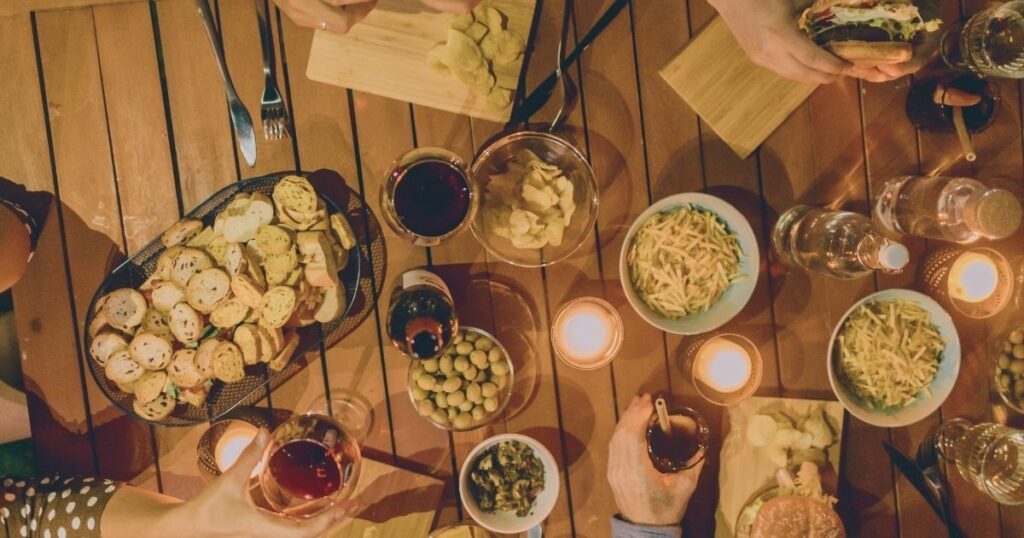
No discussion about where to eat in Barcelona would be complete without highlighting the city’s outstanding tapas culture. These small plates represent Spanish social dining at its best and offer travelers a chance to sample multiple dishes in one meal.
Traditional tapas experiences
Barcelona boasts historic tapas bars where time seems to stand still. Quimet & Quimet, a tiny standing-room-only spot in Poble Sec, has been serving creative montaditos (topped bread pieces) since 1914. El Xampanyet in El Born offers cava and classic tapas in a bustling, authentic atmosphere.
For those seeking where to eat in Barcelona with space to relax, Bar del Pla combines traditional tapas with natural wines in a setting that welcomes lingering, ideal for both quick bites and longer gatherings.
Basque-style pintxos
While technically from northern Spain, Basque pintxos (tapas-like bites on bread, usually secured with a toothpick) have found a welcome home in Barcelona. Irati Taverna Basca in the Gothic Quarter offers one of the most authentic experiences, with dozens of pintxos displayed along the bar.
Remote workers deciding where to eat in Barcelona often appreciate the flexibility of pintxo places—you can grab a quick bite between meetings or make an evening of sampling different options.
💡 Did you know? The word “pintxo” comes from the Spanish verb “pinchar,” meaning “to pierce,” referring to the toothpick typically used to hold these elaborate bites together.
Digital nomad-friendly dining options
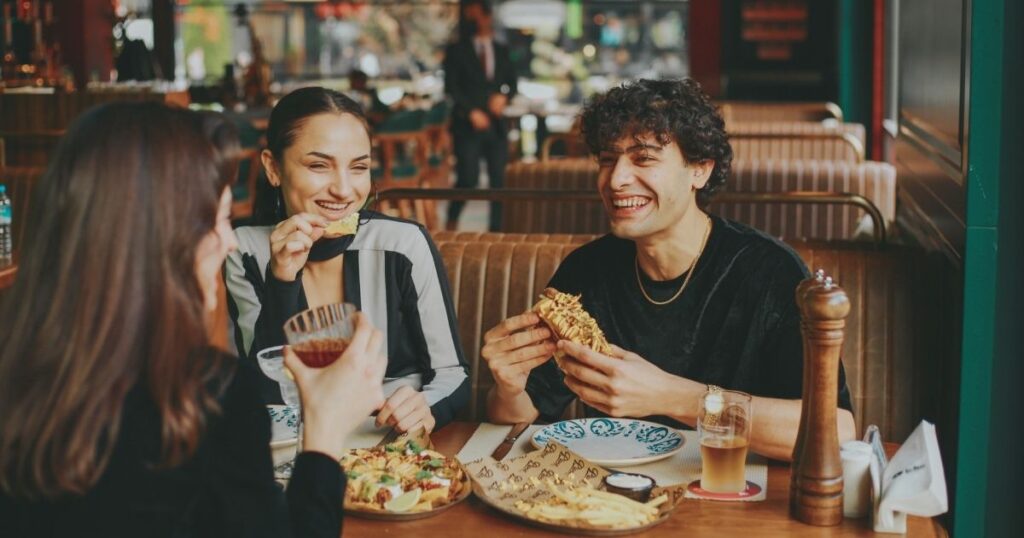
As a digital nomad, finding where to eat in Barcelona isn’t just about the food—it’s also about places that accommodate your unique lifestyle and work needs. Fortunately, Barcelona’s dining scene has evolved to embrace remote workers.
Work-friendly cafés and restaurants
Several establishments have recognized the growing digital nomad community and created environments where you can work while enjoying quality food. Spaces like Federal Café in Sant Antoni, Caravelle in Raval, and Nomad Coffee in Poblenou offer excellent food alongside good WiFi, power outlets, and an atmosphere where laptops are welcome during certain hours.
When searching for where to eat in Barcelona while maintaining productivity, look for places that explicitly welcome digital nomads or have designated quiet areas for working.
Connectivity considerations while dining
While enjoying Barcelona’s culinary scene, staying connected remains important for many remote professionals. If you’re planning an extended stay without a European data plan, consider getting a reliable eSIM solution like Holafly’s eSIM for Spain to ensure you have data connectivity throughout your culinary explorations.
Having reliable connectivity allows you to check restaurant reviews on the go, make last-minute reservations, or continue light work during solo dining experiences—a common occurrence for digital nomads exploring where to eat in Barcelona.
🌟 Pro tip: download offline maps of Barcelona’s neighborhoods to navigate efficiently between culinary destinations, especially if you’re exploring areas with potentially spotty cellular coverage.
Navigating Barcelona’s fine dining scene
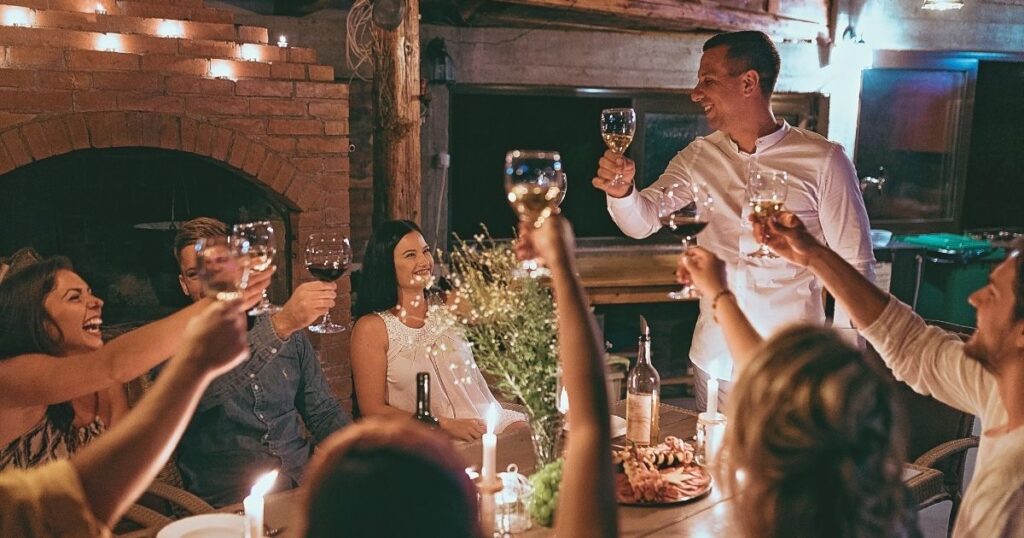
While casual eateries form the backbone of Barcelona’s food culture, the city also boasts an impressive array of fine dining establishments that have put it on the global culinary map. For special occasions or culinary adventures, knowing where to eat in Barcelona at the higher end can create unforgettable experiences.
Michelin-starred experiences
Barcelona hosts some of Spain’s most acclaimed restaurants, with over 30 Michelin stars across the city. Disfrutar, created by chefs from the legendary El Bulli, offers avant-garde Mediterranean cuisine that continues to earn international recognition. Moments at the Mandarin Oriental Hotel showcases Catalan cuisine elevated to art form by chef Carme Ruscalleda and her son Raül Balam.
For those seeking a special splurge while deciding where to eat in Barcelona, Alkimia provides a slightly more accessible Michelin-starred experience with its tasting menu celebrating Catalan culinary heritage.
Innovative dining concepts
Beyond traditional fine dining, Barcelona embraces innovative culinary concepts that redefine where to eat in Barcelona for culinary enthusiasts. Enigma offers a mysterious journey through multiple spaces with dishes that challenge perceptions, while Tickets (when open) transformed tapas into playful, theatrical experiences.
These cutting-edge restaurants typically require reservations weeks or months in advance, so they require planning.
Tips for authentic dining experiences
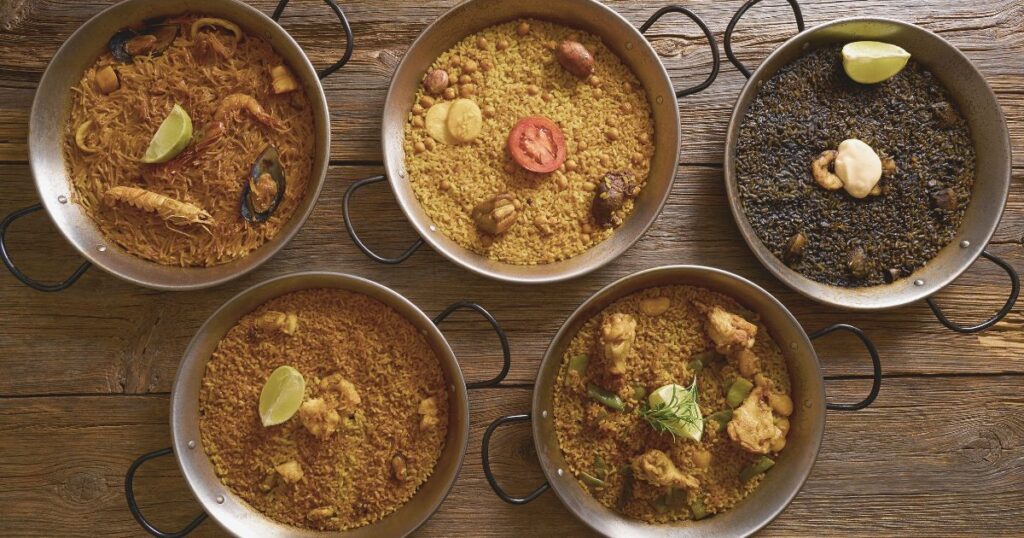
Finding where to eat in Barcelona like a local requires more than just an address—it involves understanding certain customs and approaches that help you discover authentic experiences and avoid tourist traps.
Avoiding tourist traps
Areas like Las Ramblas and Barceloneta Beach are filled with restaurants catering primarily to tourists, often offering lower quality at higher prices. When deciding where to eat in Barcelona, be wary of places with:
- Staff outside actively trying to lure you in
- Menus featuring photos of dishes
- “Paella specials” prominently advertised (authentic paella is rarely a specialty in Barcelona)
- Translated menus in multiple languages without a Catalan version
Instead, look for restaurants filled with locals, especially those speaking Catalan or Spanish. Restaurants located away from major tourist attractions often provide more authentic experiences.
Dining etiquette and customs
Understanding local dining customs will enhance your experience when exploring where to eat in Barcelona:
- Tipping is not obligatory but rounding up or leaving 5-10% for good service is appreciated
- Service may seem slower than in some countries—this is intentional, as meals are meant to be enjoyed at a relaxed pace
- Asking for tap water is uncommon; bottled water is the norm
- Bread service often comes with a small charge
- Splitting bills is common and usually accommodated
🌟 Pro tip: learn a few basic phrases in Catalan (not just Spanish) such as “Bon profit” (enjoy your meal) or “Molt bo” (very good). Using these expressions shows respect for local culture and often results in warmer service.
Final thoughts on Barcelona’s food scene
Barcelona’s diverse culinary landscape offers endless possibilities for digital nomads seeking authentic gastronomic experiences. From historic tapas bars to innovative fine dining, knowing where to eat in Barcelona transforms your stay from ordinary to extraordinary. The city’s food scene reflects its character—proud of traditions while embracing innovation, passionate about quality.
As you explore Barcelona’s neighborhoods, let your culinary adventures become a gateway for understanding local culture. The shared experience of food creates connections across language barriers and offers insights into the Catalan way of life. The best places aren’t always the most expensive or famous—they’re the ones where memories are created and where you feel a genuine connection to the city.
For digital nomads, Barcelona’s food scene offers both comfort and adventure, with options for every budget, dietary need, and occasion.
Ready to embark on your culinary adventure in Barcelona? Let Nomada be your companion as you navigate Barcelona’s incredible food scene and beyond!
Frequently asked questions about where to eat in Barcelona
Don’t miss pa amb tomàquet (bread with tomato, olive oil and salt), escalivada (roasted vegetables), fideuà (similar to paella but with noodles), calcots (grilled spring onions) in season, and crema catalana for dessert. These dishes represent the foundation of local cuisine and should be on every food explorer’s list.
For popular restaurants, arriving right when they open (usually around 1 PM for lunch or 8 PM for dinner) gives you the best chance of being seated without a reservation. Alternatively, dining mid-week (Tuesday-Thursday) typically means fewer crowds compared to weekends.
Barcelona has embraced plant-based dining with numerous excellent options throughout the city. Neighborhoods like Gràcia and El Born have particularly good selections of vegetarian and vegan restaurants that offer creative, satisfying meals beyond simple salads or side dishes.
Barcelona offers dining options across all price ranges. A basic menú del día (lunch special) costs around €12-15, mid-range restaurants average €25-35 per person, and high-end experiences start from €50 per person and can go much higher for tasting menus with wine pairings.
While speaking some basic phrases helps, many restaurants in Barcelona, especially in areas frequented by international visitors and digital nomads, have staff who speak English. However, learning food-related terms in Spanish or Catalan enhances your experience and is appreciated by locals.


